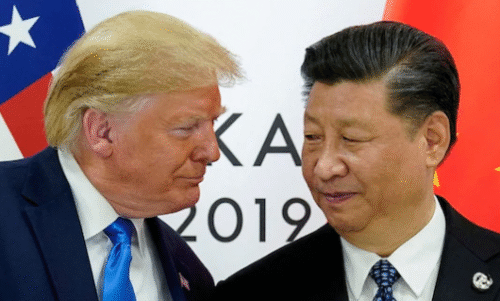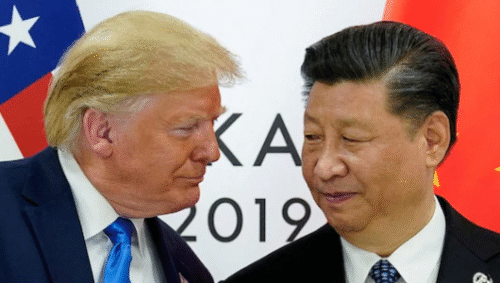US-China Deal 2025: Tariffs Cut to 55%, Chinese Students Welcomed in Higher Education

US-China Deal 2025: Tariffs Cut to 55%, Chinese Students Welcomed in Higher Education
Washington, D.C. – June 11, 2025
In a landmark move signaling a thaw in US-China relations, the United States has announced a new agreement to reduce tariffs on Chinese imports to 55% and lift restrictions on Chinese students pursuing higher education in American universities. The deal, finalized after months of negotiations, marks a significant step toward easing trade tensions and fostering academic collaboration between the two global powers.
Tariff Reduction to Boost Trade
The agreement slashes tariffs on a wide range of Chinese goods, including electronics, textiles, and machinery, from their current levels to a uniform 55%. This reduction is expected to lower costs for American consumers and businesses, which have faced higher prices due to previous trade barriers. The White House described the move as a “pragmatic approach to stabilizing economic ties while maintaining a balanced trade policy.”
Economists predict the tariff cut could stimulate bilateral trade, potentially increasing US imports from China by 15% over the next two years. However, some analysts warn that the 55% rate still reflects a cautious stance, ensuring domestic industries remain competitive. “This is a compromise that signals goodwill but keeps protections in place,” said Dr. Emily Chen, a trade policy expert at Georgetown University.
Opening Doors for Chinese Students
In a parallel development, the US will lift visa restrictions that have limited Chinese students’ access to American higher education institutions since 2020. The new policy allows Chinese nationals to apply for F-1 student visas for undergraduate and graduate programs without the stringent security screenings previously imposed on STEM fields.
The decision is expected to benefit US universities, which have seen declining enrollment from China, a key source of international students. In 2024, Chinese students contributed an estimated $15 billion to the US economy through tuition and living expenses. “This is a win for our campuses and our communities,” said Dr. Robert Lin, president of the Association of American Universities. “It restores our position as a global leader in education.”
However, the move has sparked debate. Critics argue that relaxed visa policies could pose national security risks, particularly in sensitive research areas like artificial intelligence and quantum computing. The administration has promised “robust safeguards” to address these concerns, including enhanced vetting for research-based programs.
A Step Toward Cooperation
The agreement comes amid efforts to reset US-China relations, strained by years of trade disputes and geopolitical tensions. Both sides have expressed cautious optimism, with Chinese officials calling the deal a “foundation for mutual benefit.” The US has also hinted at further talks on technology transfers and intellectual property protections, though no timeline has been set.
The deal will take effect on August 1, 2025, pending Congressional review. As the world watches, this agreement could pave the way for a new chapter in US-China economic and cultural ties.

